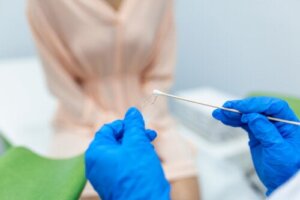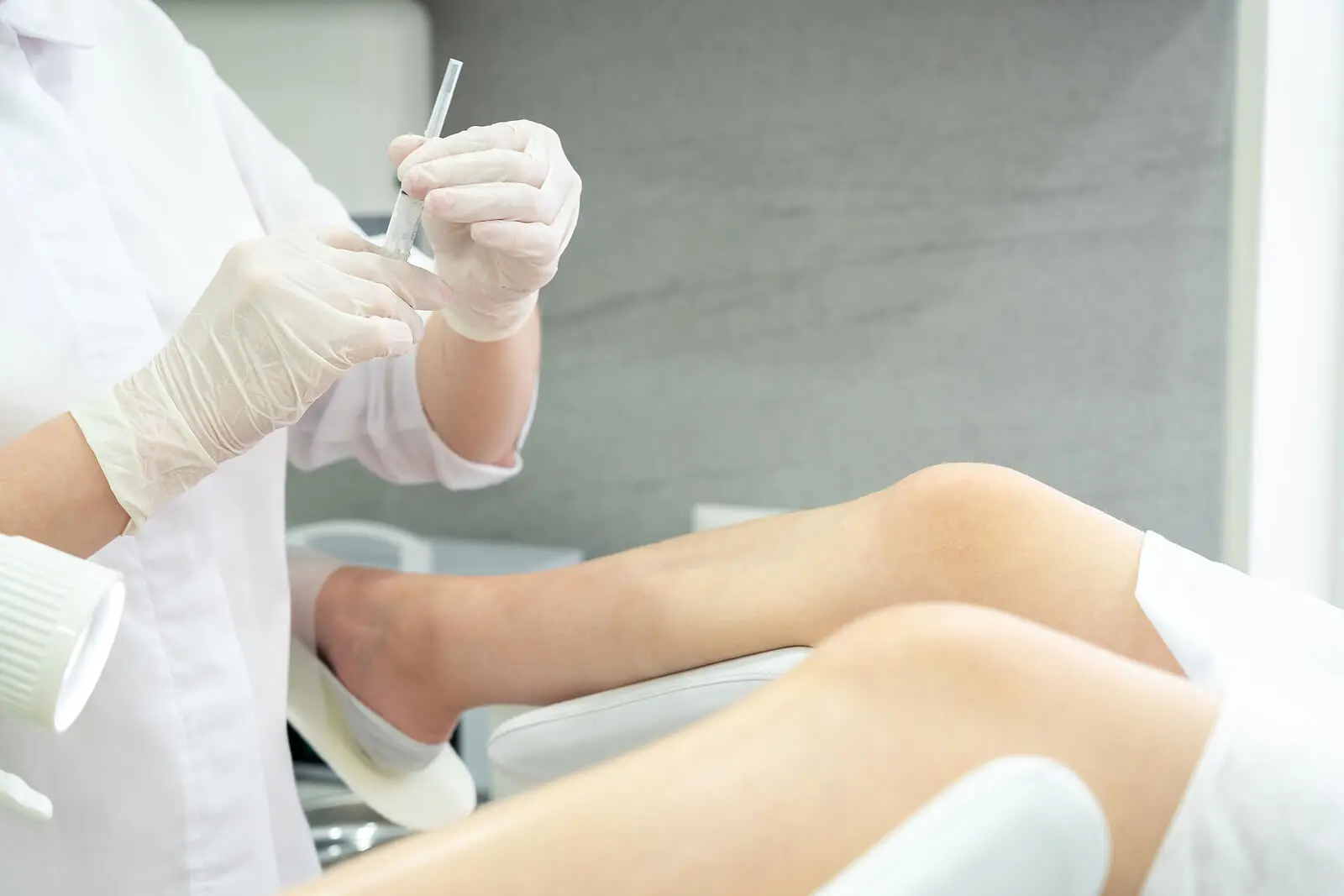How to Prepare for Your First Pap Smear


Reviewed and approved by the nurse Leidy Mora Molina
The first Pap smear or Papanicolaou’s test is a necessary gynecological examination for every woman. The method is used for screening for the early detection of cervical cancer, as referred to by the Faculty of Health of the Universidad del Valle.
The analysis can help determine who’s most at risk for the disease. Therefore, it can speed up the approach and reduce long-term complications.
Pain, discomfort, and nerves are a part of many patients’ concerns about the procedure. In reality, it’s not as traumatic as you might assume. Before you get intimidated, learn what it consists of and how important it is for your wellbeing.
What is a Pap smear, and what’s it useful for?
A Pap smear studies the exfoliated cells of the squamocolumnar junction of the cervix, as explained by the Revista Venezolana de Salud Pública (Venezuelan Journal of Public Health). The bulletin adds that this test is the most widely used way to detect signs of cervical cancer and that over 60% of the diagnoses are reliable.
More than 95% of cases of cervical cancer are caused by the human papillomavirus (HPV). It’s the fourth most common type of cancer in women, according to statistics from the World Health Organization (WHO). It’s also one of the many infections that can be identified through a Papanicolaou test.
Likewise, the cytology test can detect whether the woman is contaminated by bacteria, other viruses, or fungi, and notice any changes in vaginal cells due to menopause.
It should be clarified that this gynecological examination does not prevent carcinoma, but helps to identify it in time.
This test is of paramount importance for public health, as it reduces the incidence of serious types of uterine cancer when treated in time.
We think you may also enjoy reading this article, too: 23 Types and Shapes of Vagina: All of Them Are Normal
Preparing for your first Pap smear
From the age of 21 and up to 65, women have to schedule an annual Pap smear. Women under the age of 20 who are sexually active should also get an annual assessment.
Depending on your age, the Centers for Disease Control and Prevention (CDC) points out the prevalence of certain particularities in order to carry out the analysis. For example, a history of diseases or interventions such as a hysterectomy may impact how often you need to have a PAP smear. In these cases, it’s advisable to consult a gynecologist as to how often the test should be performed.
On the other hand, when the person has never had sexual intercourse, the doctor uses special instruments to obtain the sample. However, it’s important to know that the Pap smear doesn’t take away your virginity.
For those who come to the doctor’s office for the first time, the main suggestions include a positive attitude and relaxation, since these behaviors influence how comfortable you feel. Likewise, when you’re not relaxed, your vaginal muscles can contract, which can cause discomfort and make the professional’s work more difficult.
It doesn’t matter whether you’re seeing your doctor as a new or regular patient when it comes to preparing for the test.
Wait until the end of your period to get a PAP smear
It’s advisable to wait at least three days after your period to have a PAP smear, because during the menstrual cycle, the blood camouflages the epithelial cells of the sample. This complicates the detection of cervical cell lesions.
However, one exception applies. If your periods are heavy or irregular, the gynecologist is likely to order a checkup during menstruation. However, this is a matter for the professional alone to decide.
Maintain your usual hygiene
Hygiene of the private parts is essential. Clean with neutral soap and water. However, make sure you don’t use internal washes, douching, and intimate deodorants, as these are substances that alter the results.
This procedure also takes a look at other aspects of the vaginal nature, such as the flow, its quantity, and color. Antibacterial and fragranced cleansers affect the accuracy of the evaluation.
Don’t use any topical treatments
At least one week before the gynecological examination, discontinue medications such as vaginal ova, vaginal creams, gels, and spermicides. The composition of these remedies masks abnormal cells.
Avoid sexual intercourse
Male penetration alters the pH of the vulva and its flora. Research in the journal Medicina y Laboratorio states that the vaginal microenvironment is unfavorable for sperm, so the buffering effect of seminal pH intervenes so that spermatocytes often persist there after sex.
For this reason, 48 hours of abstinence is best before the appointment for the cytology test. Otherwise, make sure to notify your doctor that you had sexual intercourse. He/she will then be able to make a correct interpretation of the results.
What is the procedure for your first Pap smear?
During the entire test, the patient remains lying down on a special table or chair. The examination takes place in an office, with the appropriate instruments and with a qualified professional who will perform the following steps:
- Separation of the genital lips: With one gloved hand, the physician separates the patient’s vaginal lips.
- Placement of the instruments: With the other hand and without lubricant, the gynecologist inserts the speculum longitudinally into the vagina and turns it 90 degrees. Immediately, she or he opens it and fixes it open when the uterine cervix is completely visible.
- Specimen collection: A spatula and a special brush are the tools to collect tissue from the outside of the cervix, the inside of the cervix, and the bottom of the vagina. They do this through a gentle scraping that they then empty onto a slide and send to the laboratory.

Are there any risks involved in Pap smears?
There are no risks involved in performing the test. However, you should inform the specialist about the following considerations:
- If you have an intrauterine device (IUD)
- A history of bladder or vaginal prolapse
- If the introitus or entrance to your vagina is narrow
- Pregnancy status
A Pap smear during pregnancy does not rupture the amniotic sac or cause premature labor, but it must always be done and ordered by the attending physician.
There’s also no need for rest or special care after the examination. Slight bleeding after the Pap test may occur, but it’s nothing to be worried about.
Like this article? You may also like to read: How to Cure Vaginal Candidiasis with Natural Remedies
How often should I get a PAP smear?
The frequency of Pap smears depends on the age and clinical condition of the patient. The common rule is every two years if the results are normal. When the evaluation comes up irregular, however, further follow-up examinations will be ordered.
In this regard, the American Society of Clinical Oncology emphasizes that if abnormal cells are present, a colposcopy is often followed up with a colposcopy. This provides more data for early diagnosis in case it’s uncertain.
All cited sources were thoroughly reviewed by our team to ensure their quality, reliability, currency, and validity. The bibliography of this article was considered reliable and of academic or scientific accuracy.
- Aguilar M, Corindia Y, Corona M, De Oliveira J, Guédez P, Herrera S, Mujica J, Najul M,Rumenoff L. Utilidad de la citología vaginal y antecedentes gineco-obstétricos en el diagnóstico de patologías cervicouterinas. Revista Venezolana de Salud Pública. Vol. 8. Núm. 2. pp. 94-122. Venezuela; 2020. https://revistas.uclave.org/index.php/rvsp/article/view/2977/1843
- Algunas mujeres mayores no están haciéndose las pruebas de detección de cáncer de cuello uterino según se recomienda. División de Prevención y Control del Cáncer. Centros para el Control y la Prevención de Enfermedades. Estados Unidos; 2020. https://www.cdc.gov/spanish/cancer/dcpc/research/articles/older-women-cervical-cancer-screenings.htm#:~:text=El%20personal%20de%20atenci%C3%B3n%20m%C3%A9dica%20puede%20aconsejar%20a%20todas%20las,de%20hacerse%20pruebas%20de%20detecci%C3%B3n.
- Cáncer de cuello uterino. Organización Mundial de la Salud. 2022. https://www.who.int/news-room/fact-sheets/detail/cervical-cancer
- López Arias A. ¿Qué son y para qué se hacen las pruebas de tamizaje? Universidad del Valle. Facultad de Salud. Sala de Prensa. [El Tiempo, pp.3]. Colombia; 2015. http://uvsalud.univalle.edu.co/comunicandosalud/wp-content/uploads/2015/05/06.05.15-Qu%C3%A9-son-y-por-qu%C3%A9-se-hacen-las-pruebas-de-tamizaje.-p%C3%A1g-3.pdf
- Colposcopia: Cómo prepararse y qué saber. Sociedad Estadounidense de Oncología Clínica. Estados Unidos; 2020. https://www.cancer.net/es/blog/2020-08/colposcopia-c%C3%B3mo-prepararse-y-qu%C3%A9-saber
- Salcedo-Cifuentes M. Evaluación de la persistencia de espermatozoides humanos en la vagina. Medicina y Laboratorio. Vol. 21. Núm. 3-4. Colombia; 2015. https://docs.bvsalud.org/biblioref/2021/02/907767/espermatozoides.pdf
This text is provided for informational purposes only and does not replace consultation with a professional. If in doubt, consult your specialist.








